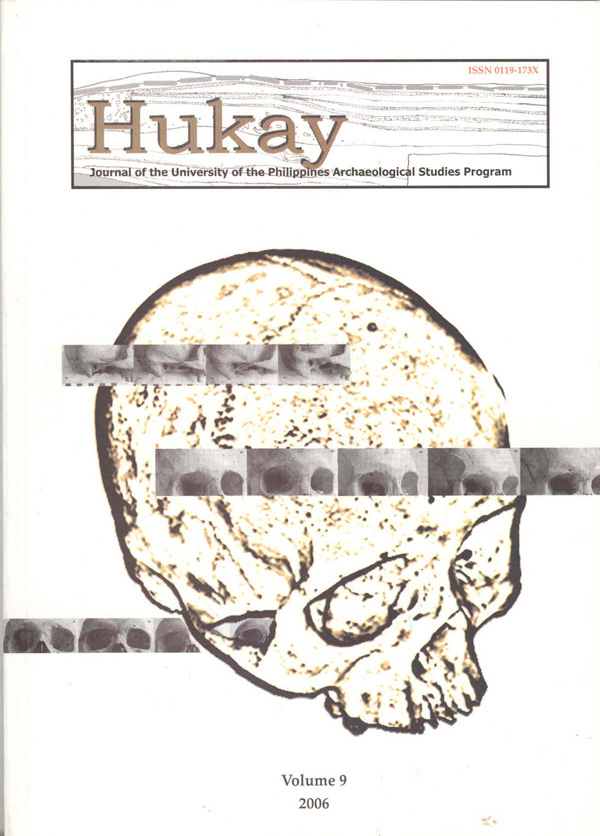The Reliability of an Externally-Derived Method for Sexing Skulls When Applied on Archaeological Samples from Banton Island, Philippines
Abstract
A number of methods have already been developed for analyzing unknown human skeletal material, which includes methods for ageing, sexing and estimating stature. Usually, the development of these methods had relied upon particular base populations, thus, their use to outside populations has been generally presumed unreliable. The present study investigates this presumption, by determining the reliability of a particular method when applied to another population. The Acsadi & Nerneskeri method, a sexing method based on the skull and developed from European samples, is applied here to a Philippine sample known to have come from a single group - the cranial series from the Guyangan Caves in Banton Island, the Philippines. The method involves assigning scores to five morphological regions: the nuchal crest, mastoid process, supraorbital margin, glabella and mental eminence. The reliability of this method is evaluated by determining if its application to the Banton series had produced consistent results, or if the scores assigned to the morphological regions are consistent with each other. Two approaches were followed to examine consistency among scores: the first is direct and simple, and describes consistency among scores in terms of the absolute distances among them. The second approach uses a model to quantify consistency and considers the intraclass correlation, a type of inter-rater reliability test, among scores. The amounts of consistency achieved. in both approaches arc high, indicating strong consistency among scores. The reliability of the Acsadi & Nemeskeri method to the Banton series is then argued for, suggesting that externally-derived methods could have wider applications than many researchers might have been willing to consider.



